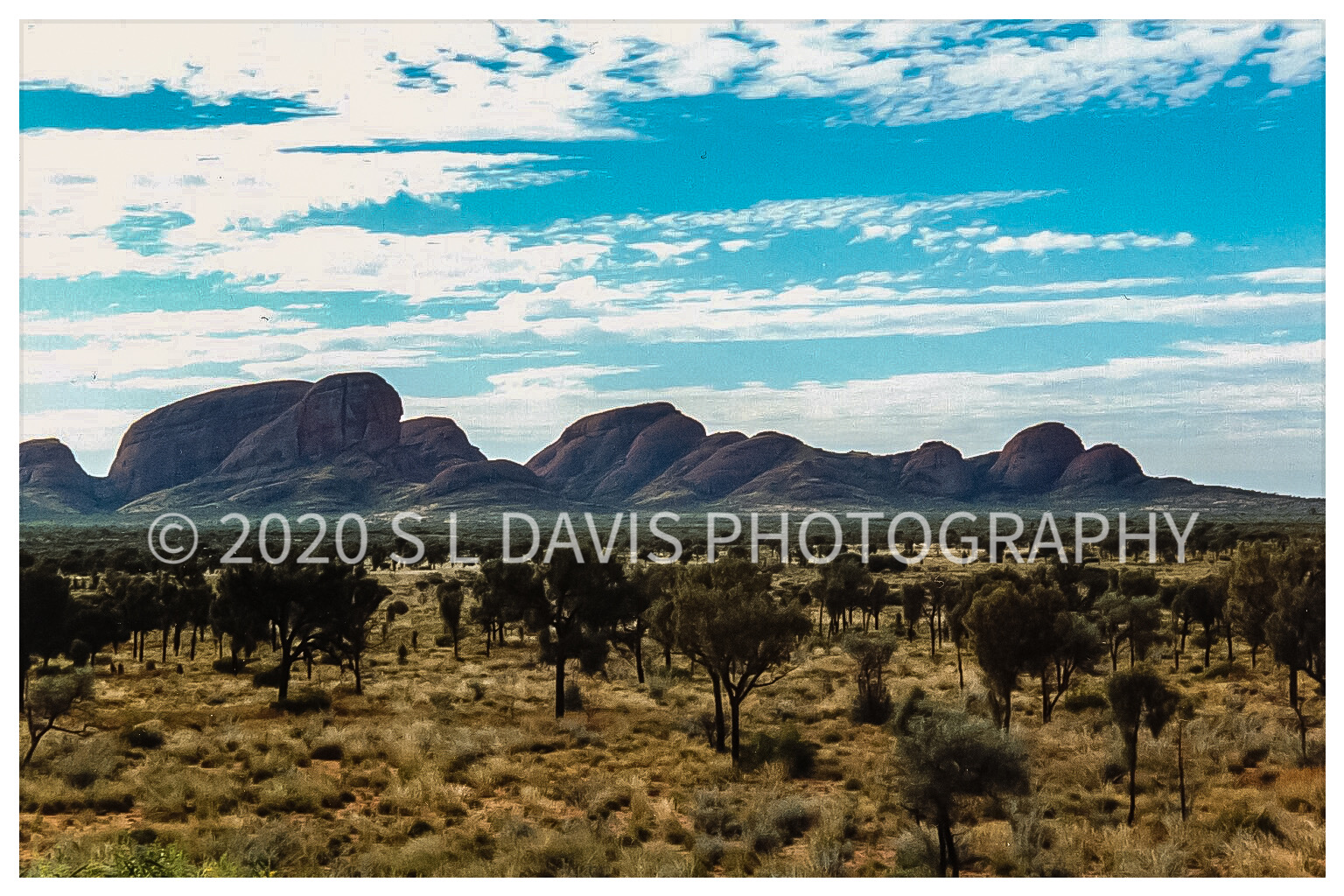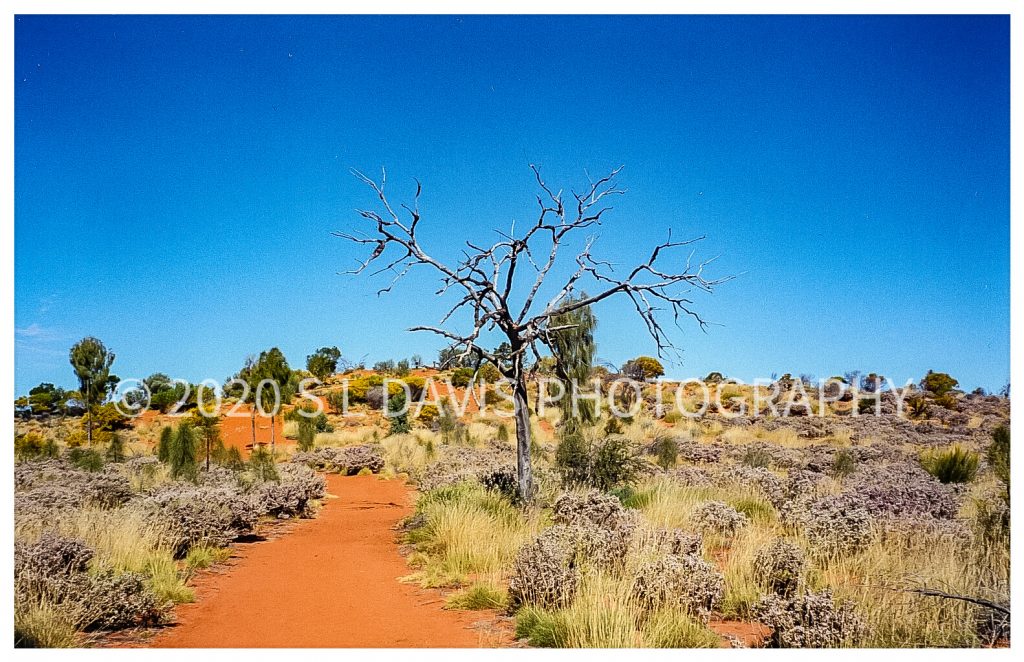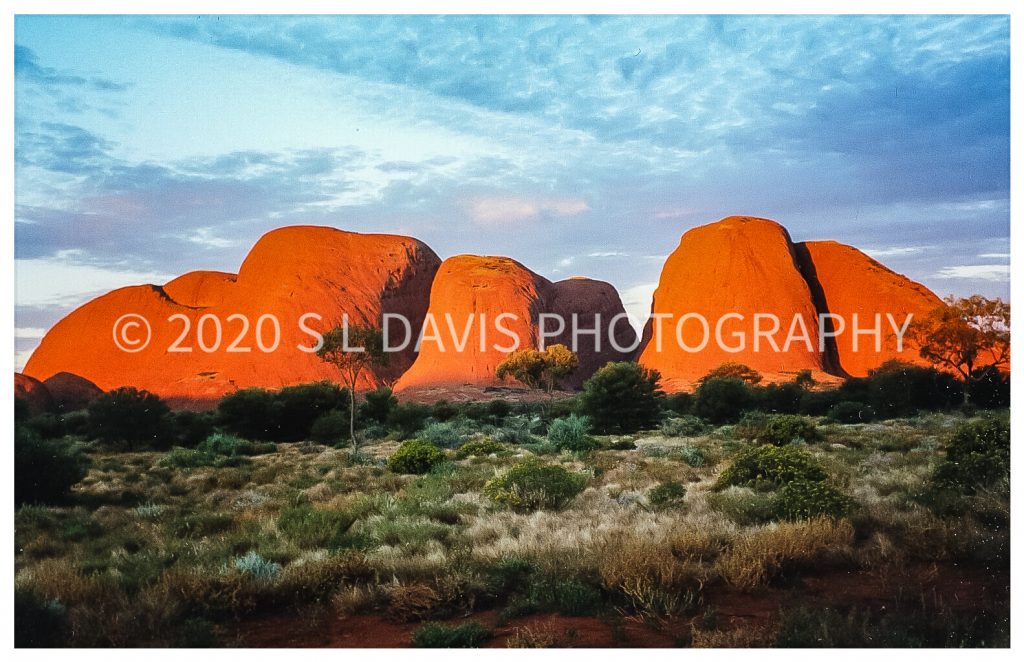
The land does not belong to the Aborigines, the Aborigines belong to the land. Those of you old enough, may also remember this being mention in the film Crocodile Dundee (1986)… This is an actual fact and not the stuff of movie fiction.
Uluru or more commonly known amongst tourists as Ayers Rock, isn’t just a large rock randomly plonked in the middle of the Australian outback. It is also a community with the nearest large town being Alice Springs. Whilst it is a notorious tourist attraction, this “Rock” is believed by local aboriginal tribe the Pitjantjatjara, the rock itself is in fact sacred.
My arrival in Ayers Rock was to be another fun filled adventure but also a time for appreciation and reflection. Staying at the YHA, I met a backpacker called Katie who was from Liverpool. She was also travelling alone, so we teamed up. Our afternoon was spent navigating our way around this vast area of dessert and also an opportunity for me to be booking various excursions I wished to participate in.
Katie and I were probably a pair of young brunette bimbos or otherwise known as “Drongo Sheilas” when it came to Aborigines. We just thought they lived in makeshift campsites on the land. Whilst this isn’t totally naive and some do, not all do.
So here was Katie and I taking naive pity, like we were back home taking pity on the homeless, handing over food and small change. A little while later in a long, scorching desert walk back to our dorm, we spotted the very same Aborigines we’d taken pity on earlier, drive past us in a decent ute. First lesson learnt! Never judge a book by it’s cover. Sub lesson, do more research on the locals.
The following day I went off to my pre-booked tour of the desert by camel. This was going to be yet another unique experience.
Arriving promptly for my first ever experience of riding a camel. I was excited by the fact this was not just another new experience but an excellent way to see a fair bit of the desert and Uluru itself. It wouldn’t start off so smooth sailing as one had thought…
Our guide arrived with a string of camels and those who booked were advised to climb aboard once all camels were settled on the ground. They groan, they smell a little and if you are really unlucky, they will spit at you. They are quite literally grumpy. The camels used and which are also common in Ayers rock are one hump-backed. There is an estimated 200,000 one-humped, dromedary type camels in the wild.
Needless to say, things started to get interesting or at least for the couple sat on the front camel.
The guide arranged the camels to all stand up ready to take us tourist off into the dessert. The front camel decided the pair of tourists on its back could do with a little bit of uppity down time, whereby it really wanted them off it’s back and therefore this pair ended up hanging on for dear life, before the guide misguidedly thought he had it under control. Oh no this front camel had other ideas…
The guide started to move along to check all of the other camels and tourists and ensure everything was as it should be prior to leading the front camel and attached string of camels off for this tour. Front camel waits till he gets half way down the line and decides, we are off and it was quite literally a slow gallop across the desert with the poor guide screaming as he chased after our line, “Wait, come back! Stop!”. He eventually achieved catching hold of one of the string and regaining control. Clearly not one of his better tour days…
Needless to say we managed to have an amazing tour and also get up close to Uluru. I though wanted to get closer and had booked a vehicle tour to achieve this a couple of days later.
The following day saw me taking off for a long hike in the outback and photographing anything I deemed artistic and any nature I came across. I was fascinated by the impactful colouring of the red sand paired with the stunning blue sky. It was searing hot and hydration was necessary. Katie had joined me and was busy exploring her own interests and we only joined up to take photos of the each other where required. The Outback in this area is interesting as it’s mostly what the Aussies call “Outback” but it is also “The Bush” this is because there are areas that are not strictly dessert whereby it is arid and little grows. There is “The Bush” area like the photograph I took below that has a wide variety of shrubs and greenery as the soil is fertile and is able to support crop growth. After a productive day exploring, we headed back to our dorms for a well earned rest.

The vehicle tour started early the following day and was filled with Aboriginal history and sightings of wild dingos, kangaroos, wallabies and emus. We made it to Uluru and an option was given to climb Uluru. This however, came with health warnings as well as Aboriginal history, traditions and sacred laws. At this point in time there was no actual law that prohibited the climbing of Uluru. There was various signs and guided advice given to not climb the rock if you suffer with health conditions as there had been numerous cases of people suffering a cardiac, trying to get to the top.
The Aborigines requested tourist to not climb the rock as they believed it to be sacred. It would take to October 2019 for this to be permanently prohibited.
With regards to the history of Uluru. According to the Aṉangu, traditional landowners of Uluru: The world was once a featureless place. None of the places we know existed until creator beings, in the forms of people, plants and animals, traveled widely across the land. Then, in a process of creation and destruction, they formed the landscape as we know it today. Aṉangu land is still inhabited by the spirits of dozens of these ancestral creator beings which are referred to as Tjukutja or Waparitja.
There are two other accounts given in Norbert Brockman’s (1997) Encyclopedia of Sacred Places. The first tells of serpent beings who waged many wars around Uluru, scarring the rock. The second tells of two tribes of ancestral spirits who were invited to a feast, but were distracted by the beautiful Sleepy Lizard Women and did not show up. In response, the angry hosts sang evil into a mud sculpture that came to life as the dingo. There followed a great battle, which ended in the deaths of the leaders of both tribes. The earth itself rose up in grief at the bloodshed, becoming Uluru.

My tour now over at Uluru, it was time to fly back to Cairns and complete the next stage of my adventures on the Gold Coast…


That last picture of Uluru is just perfect. And thank you for the history regarding it, I have learned something today.
Glad it has inspired you, thank you for your kind words